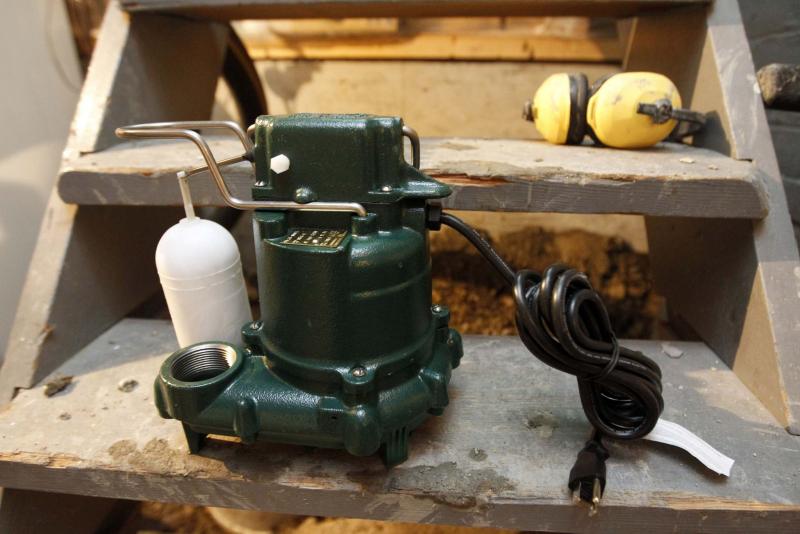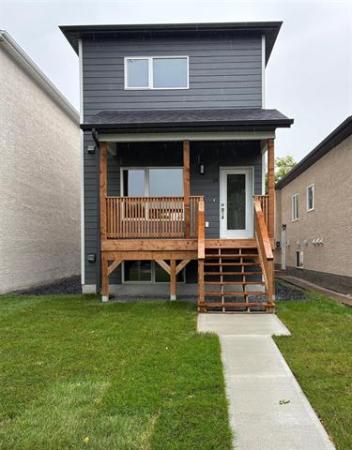Question: While doing an online search, I came across an article from the Winnipeg Free Press in which you answered a homeowner’s questions about capping a sump pump pit to combat humidity and radon. I got your contact info from there. The reason I came across the article is because I am trying to understand whether or not I should cap my sump pit with an air-tight seal? The reasoning is that our sump pump is located in a three by five-foot utility closet, which we usually keep closed. Last week, I went in there to check something and noticed the beginning of mould growth on the drywall in the closet. I immediately removed about 60-70 per cent of the drywall and sprayed all the surfaces with a water-bleach solution. Thankfully, I did not see any mould on the overhead joists or the studs.
With that, my thought was that the moisture from the sump pump, enclosed in a small space, was the culprit. I am hoping it’s not a larger waterproofing issue with the foundation. In the summer we did notice a damp or musty smell in the basement. So, now I wonder if that was the sump pit as well. To solve both issues I wondered if installing a sealed lid on the sump pit and/or a fresh air vent to the closet would be the right solutions?
I would love your thoughts.
— Thanks, Anthony Zanfini
Answer: Your perceptions of mould growing on drywall in a small basement closet, with a partially opened sump pit, are rightly focused on the water in the sump. Sealing the lid may kill two potential issues with one effort and should be done whether or not the mould is completely due to moisture from the sump.
As stated in this space numerous times, the underlying cause of mould growth in our homes is excessive moisture. Whether that is due to excessive humidity from human activities, leaking foundations, windows, roofs, or other causes, getting rid of the moisture is the key to eliminating the mould growth.
There are several things in our homes that are inherent problems in this regard, due to the constant presence of water.
Sump pits are used to drain excess moisture from the soil around and under our homes, so may always have a certain amount of water present. This may be visible by lifting the lid, but may also be present in the weeping tiles terminating at the sump. Either way, this moisture can evaporate and raise the humidity in the air in the surrounding environment.
For this reason, sealing the lid fairly tightly can prevent this airborne moisture from entering your basement closet area. Even without direct contact with standing water, drywall can become partially saturated. If this occurs, mould is sure to develop in the gypsum or the paper if they remain damp.
One reason this is so important is that at least one potentially toxic mould species loves drywall paper. It is one of its favourite food sources, so sealing the lid to eliminate the possibility of the water in the sump gaining easy access to the closet air can prevent a possible safety hazard.
At the same time, stopping this air from escaping the sump may also prevent a second threat to the health of your family. Radon gas, which may or may not be present in hazardous amounts, can enter your home primarily from the soil under the basement floor slab. The largest area of communication between this soil and your home is often the sump pit. Sealing the sump lid should improve the situation dramatically by eliminating water vapour and radon gas leakage into your basement.
The simplest ways to achieve this goal are to retro-fit the existing sump pit lid or to make a new one. Most sumps and lids are now made of some form of plastic, which prevents moisture damage and decay. Manufactured sumps often have properly sized holes drilled in the lids for the discharge pipe and electrical cords. These may have removable synthetic rubber stoppers installed, which can be drilled or manipulated to fit tightly around these items.
If your lid does not have these properties, you may have to fashion a new lid from acrylic or other plastic sheathing available at your home centre. Cutting this sheathing to fit on the top rim of the sump pit, and drilling appropriate sized holes for the pipe and wires, should be within the skill set of most handy homeowners.
The next area to address in relation to sealing the sump lid is how to fasten it, securely. Most relatively new sump pits have threaded areas integral in the rim, designed to easily accept bolts of a certain size. You should ensure that your lid has holes drilled in corresponding locations to match these. If the pit is older, or oddly shaped, you may have to drill your own pilot holes and take it from there.
Finally, installing a waterproof gasket on the underside of the lid, encircling the pit rim, will maintain a good seal once the lid is screwed down. Finally, caulking around the discharge pipe and wires if required, with easily removable caulking, will complete the job.
Tightly sealing the lid of the sump pit in your small basement closet should be compulsory, whether it is the main contributing factor to your mouldy drywall or not. Preventing damp air intrusion into the basement from the sump will not only lessen the chance of the mould coming back, but it should also help stop potentially dangerous radon gas from leaking in.
Ari Marantz is the owner of Trained Eye Home Inspection Ltd. and the past president of the Canadian Association of Home & Property Inspectors — Manitoba (cahpi.mb.ca). Questions can be emailed to the address below. Ari can be reached at 204-291-5358 or check out his website at trainedeye.ca.
trainedeye@iname.com




